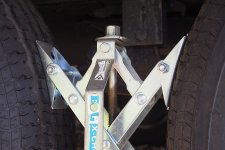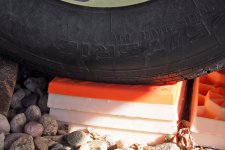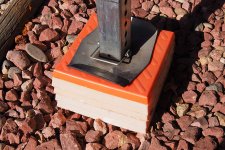danemayer
Well-known member
Gravity (the weight of the trailer) is a minor player in the force vectors applied to a tire.
For discussion purposes let's assume a typical G-rated tire on our rigs (31.5" diameter, 6" tread width, 7.5" sidewall height) inflated to 100PSI.
The interior of the tire has a surface area of approximately 5,000 square inches. At 100 pounds per square inch, the internal forces applied are 500,000 pounds (1/2-million), precisely EVENLY applied to all interior surfaces of the tire. (Similar force is also applied to the rim, but I ignore them in this discussion because the rim is rigid.)
Now consider the (approximate) 2,500 pounds of weight applied to the exterior of the tire when bearing the weight of the trailer. This weight (force) amounts to a mere 1/2 of 1% (.005) of the force being exerted on the other side of the rubber!
But because the tire is not rigid, this weight does compress the tire, making the interior air volume slightly smaller (presuming the tire is strong enough not to stretch). As a result of the compression, the interior air pressure rises by .005PSI from 100PSI to 100.005PSI, and because air is an elastic gas, that pressure (force) is EVENLY APPLIED to the entire interior surface of the tire.
Hans,
Thanks for elaborating.




